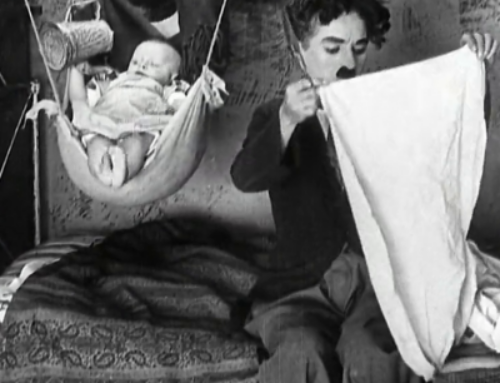The working group formed by Gianluca Cepollaro, Jacopo Albasini (mountains), Umberto Anesi (government of the territory), Serena Curti (culture) and Ilaria Perusin and Paola Flor (landscape), and Maddalena Pellizzari (tourism-Dolomiti), met with Paolo Castelnovi to deepen the reflections begun in the winter months on the theme of ‘re-inhabiting the mountains’.
At the centre of the reasoning is the inhabitation of the Alpine space as an opportunity, freed from the limits that the mountain environment imposes and the ideologies that undermine it. Following this path, the need emerged to examine three thematic vertices that transversally affect the various training activities carried out by the group’s individual members:
the mountain;
health and well-being;
culture.
By bringing these vertices into tension, we wish to attempt to verify the idea that mountain places, characterised by a high environmental, cultural and social quality, can guarantee individual and collective well-being. From the formulation of this hypothesis, it emerges that the theme is undermined by a series of ambiguities linked to the identification of the favourable conditions for high liveability in the mountains.
Paolo Castelnovi. Inhabiting the mountain inhabiting the world.
The mountain imposes three paradigms, useful for inhabiting the world: time, space and relationship. Thinking that inhabiting the mountains means in some way inhabiting the world is a richly suggestive perspective, particularly if it is read through the dimensions of time and space, in a non-localistic instance that attempts to broaden the view when addressing the issue of the preferability of living at high altitudes. The Alpine space in fact does not offer particularly favourable territorial conditions that make living an easy matter to deal with. In this sense, re-housing simplifications, such as the offer of low-priced houses (houses for 1 Euro) to stimulate the repopulation of marginal areas, playing on the observation that one can breathe good air in the mountains, uncover the side of numerous problems and criticisms. Instead, addressing the issue through the variable ‘time’, understood not as short but as deep, and the variable ‘space’, understood not as proximate but as enlarged, allows us to raise the level of the discussion.
TIME. Ours is only one of thousands of times in the world, and in the mountains it is certainly less important than many others, e.g. that of the waters (which follows that of the climate), that of vegetation and fertile soil (which follows that of the waters), that of the cyclical seasons, not to mention the more geological times. These are almost all times that have slower rhythms than ours. We have the moving effect of little birds, that when we pick them up we feel their hearts flutter and understand their fragility. Hence, the need to set our clock to other, more decisive clocks, and also, for practical purposes, the need to put the fundamental projects and choices regarding transformation on a long time schedule. In our planning, we should always remember the rules of ascent: slow, long, steady pace.
Certainly, mountain times are ‘inhuman’ and as far as our projects are concerned, they stimulate us to take the measure of our smallness, to calm our pride, to optimise our strengths, to follow small projects, to recognise that the results are often different from expectations. In the plains, where it is easy to bend the environment to what we want, it is easy for the results of the project to coincide with the premises. In the mountains, a particularly fragile place, the outcomes are often unpredictable.
SPACE. What we are used to calling ‘the context’ is instead the ‘text’. Design is context. The minimum requirement given to those accustomed to working in design terms is that design is an extension of the designer, it is an enhancement of the designer’s capabilities. Therefore, when working in design terms, there is a tendency to mistakenly consider that we and our project are at the centre of the scene in which we are acting. The rest is context. This tendency is within the motivational DNA of the person who designs and who tends to assert his or her design. In the practice of building designers, this is often seen when they attempt to construct their work, but in reality it is a sin of pride that renders the project itself useless, sometimes harmful. In the mountains, the context, i.e. the fact that we are immersed in such a harsh and so autonomous environment, makes it easier to understand that what we are working on is the real result of the work. It is the whole that will emerge over time from the environment on which we act with the project, for those who will experience that place later, that is relevant. To say then that we will only be judged on what we have done is not correct, because we will also be judged on the effects of what we have done with respect to the whole. Judges, in fact, do not look at what has been done individually, but always relate it to the whole. Within a landscape, for example, it is not a particular work done at a particular time that counts, but the whole in which the work is embedded that counts. The architect sins of arrogance when he believes that his work is placed at the centre of the world, that the whole context is reduced to a glorifying backdrop for the text he has drawn (designed). The mountain, as a result of this reflection, really teaches, because it places before us an absolutely master context in which our actions are part of a much broader and slower process of progressive modification where any Promethean action succumbs in the face of the forces at work. In our puerile narcissistic world, we believe that it is up to us to choose a point and modify it or simply put it in the centre of attention so that it becomes the sign of our action and the whole world revolves around it. On the contrary, there is no understanding and there is no plan of action except from the fact that with our presences and actions we understand and modify a whole that for 99% remains unaltered: our punctual transforming power dissolves into a great overall metabolism, with respect to which it will be homeopathic medicine or conversely a foreign body to be expelled like a bacterium. Never a vital centre of transformation: Prometheus in the mountains loses and the eagles eat his heart.
RELATIONSHIP. In the mountains, the community relationship is constricted and not chosen, it is due to conditions. The traditional community in the mountains is the result of a constrictive condition and a search for a fragile balance that has as its counterpart the renunciation or limitation of individual freedom. The one euro houses initiative is the result of a process of neo-colonisation of marginal areas that must be considered in relation to the phenomenon of abandonment that preceded it. The abandonment of Alpine areas, in fact, caused the dissolution of the community that had long given meaning to the relationship between the individual and the mountains. That community, which had represented the mediation between individual projects, transformed into collectives, and the mountain context, when it dissolved, generated a short circuit between the individual and his living space. We must therefore give up the idea that social relations are capable of resolving the conflicts inherent in the mountain context: in the neo-colonisation, the new generations will not be able to rely on this element as a means of mediating with the mountain. This lack has also been generated by the new generations’ emphasis on individual freedom as the basis for realising their own life projects. Today, the human-environment relationship has become a primarily private one that concerns individual choices. Therefore, in today’s situation of abandoned mountains, the new colonisation can only take the form of hermitage, speculation, missing community. The relationship with the environment is individual (where by individual we mean the mission unit, which for humans can be, in addition to the individual, the family, the small group). The reasons for relating to the mountain environment are so deep and intimate that they cannot be shared socially. It follows that the necessary, indispensable cultural and political relations on which human consortium is based cannot be the binding and productive element of large common projects (as is the case for the city, for example). There are no cities in the mountains because the pact between men is subordinate to the pact between the individual and the environment. For all practical purposes, the need to calibrate projects on individual and small group autonomy and independence is evident. The common feeling exists only as a temporary agreement between a few dozen individual feelings.
Comparing opinions
Following the reflections proposed by Paolo Castelnovi, a comparison is opened up with some questions on how to combine the three paradigms useful for inhabiting mountains and the world (time, space and relationship) with the relationship between the three components of culture-mountain-care/well-being, the subject of the group’s research.
- How does the theme of individual health, seen not as the absence of disease but as a state of bio-psycho-social well-being, fit into this reflection? If, in fact, as we have said, the project is part of the context and the environment in which it is located, then even a reasoning on individual health in the mountain context must take into consideration not only the social element but also the environmental element that influences the health of the individual. Any environmentalist question launched in recent times should get away from the guilt complex with which we tend to approach our relationship with the environment; a concept of guilt, by the way, that we find at the basis of Christian and Jewish religion. The point of arrival should be to understand that the well-being around us is our freedom. This point of arrival was reached first and foremost by Eastern philosophies. When the system (the context) is sustainable (autonomous), then the individual who has taken charge of it can consider himself free. This idea is reflected in nature: man as a mammal takes care of his offspring until he achieves independence. Our freedom comes when those we have taken care of have become autonomous. If this type of relationship and this idea of care also apply to the context, then a healthy (sustainable) context means more individual freedom: the more the context (the environment) has its own autonomy, the less I am engaged in caring for unhealthy situations.
- It seems that Eastern thought has arrived at certain conclusions on the relationship and co-impllication between individual health, environmental well-being, and contextual care that Western thought has not been able to fully address, choosing a different path; think, for example, of the concept of guilt in the Judeo-Christian tradition. Does this leave only the ‘oriental’ way of declining the relationship between contextual well-being and individual health? This question is played out within the idea of the limit set and the limit to be crossed. It also recalls the theme of boundaries, more or less porous, between cultures. It is true that borrowing concepts from other cultures is a difficult task, just as any translation is always complex, but it is also true that some of the reasoning of Eastern thought can become a source of inspiration and enhancement.
- There are a number of stereotypes associated with the mountains, when it comes to health and well-being, especially a fictitious Alpine world inhabited by an ideal community. Breaking out of these stereotypes, however, does not mean demonising the mountain community as such, but recognising that it is the result of a constrictive contextual situation that has found sustainability in relation to the environment, finding a balanced situation thanks to a pact of non-belligerence between man and mountain. This ‘being sustainable’ pays the price of a strong limitation of individual freedom because in order to keep the system in balance, a collective effort must be made. What is important is to understand the need to give up the idea that only social relations and collective projects constitute the paradigm for solving contextual problems.
- Long time and slow mountain time are opposed to contemporary individual and political demands for immediate answers. Many decisions must be taken so that they have short-term effects. On the other hand, when it comes to planning, a reading of the landscape and context is fundamental, which requires an overall vision, in addition to the physical aspects, and which takes into consideration many areas including training and education. Design, context, reading, education, training: these processes must be accompanied on the territory, but by whom? Who is the actor: the hermit, the new inhabitant from the city or the native? How important is the role of balance in fragile contexts such as the mountains? Culture, landscape and land governance represent a strong relationship within which we must move. All these aspects are linked and the role of balance in fragile mountain contexts is decisive. However, in a situation, such as the current one, where there is a lack of strategies, the connection between a collective direction and individual choices emerges as a problem. We live in an era in which we are directionless heirs, especially with regard to culture and architecture, whereas it is better for environmental sciences. The connection between culture (project location) and design actions establishes the framework within which the search for balance takes place.




